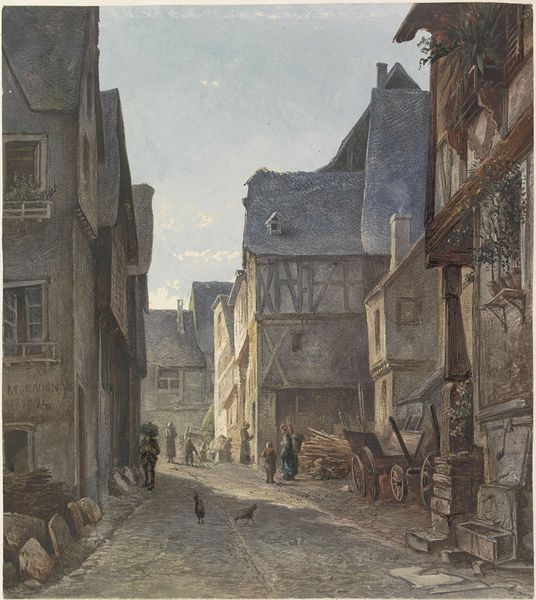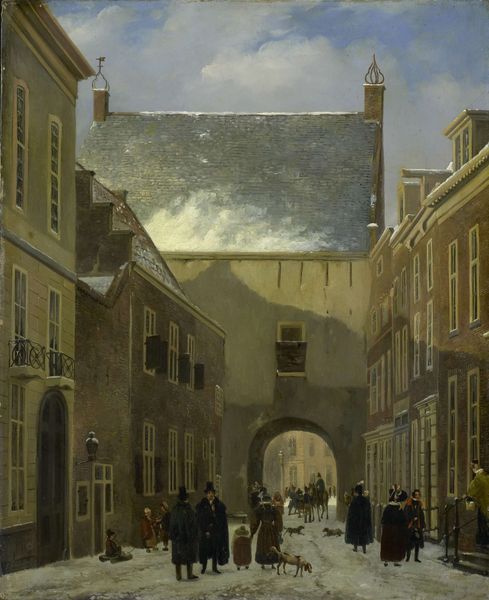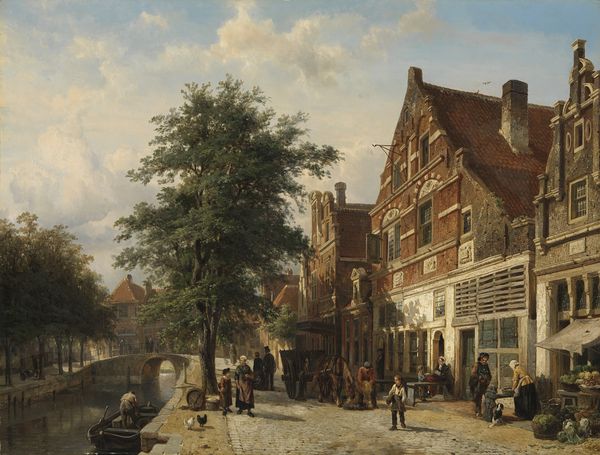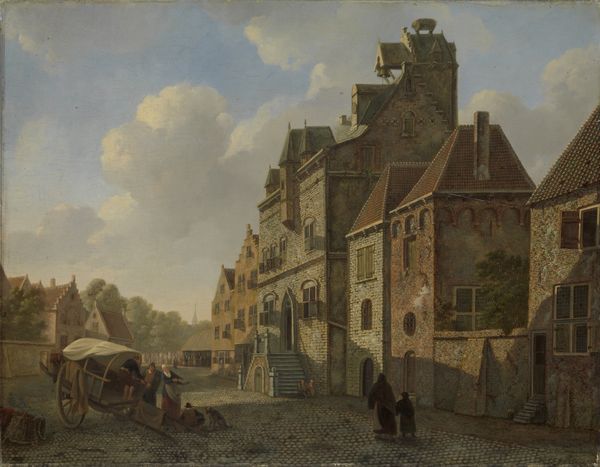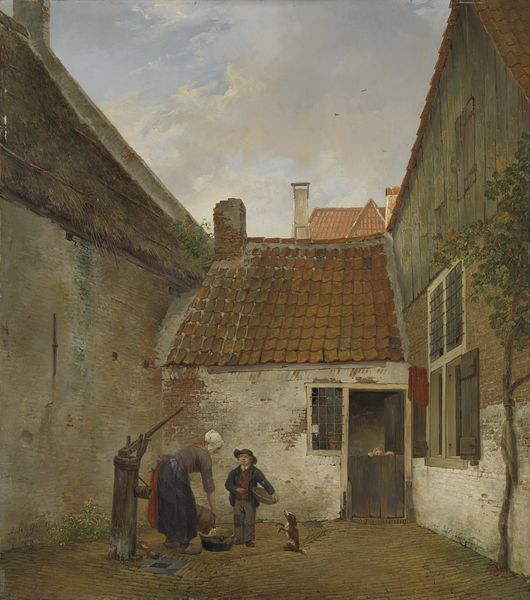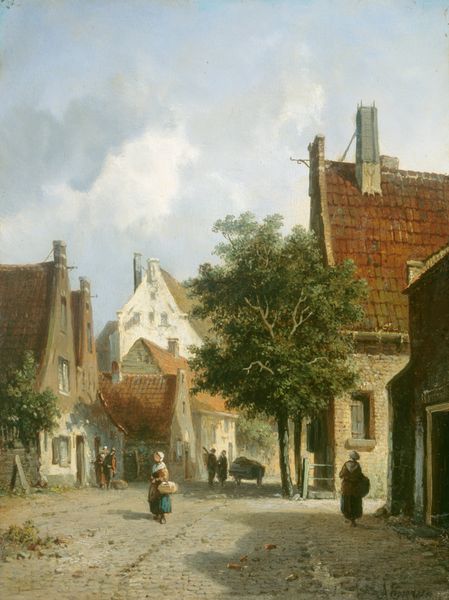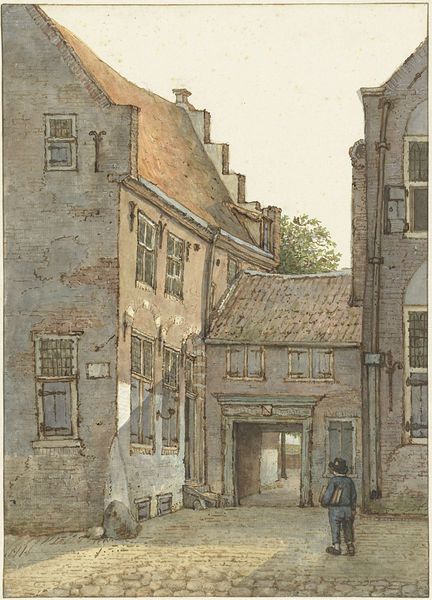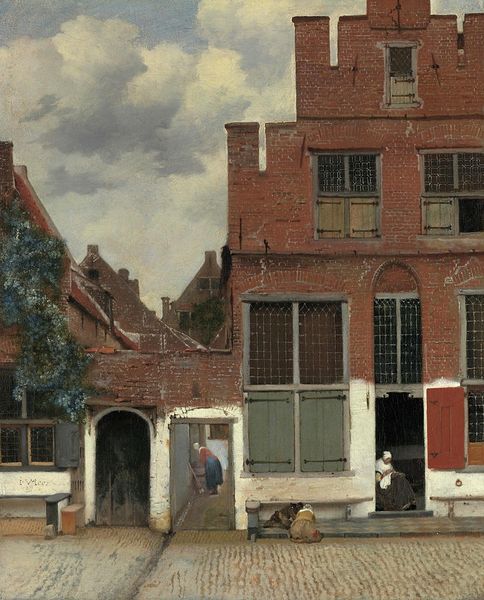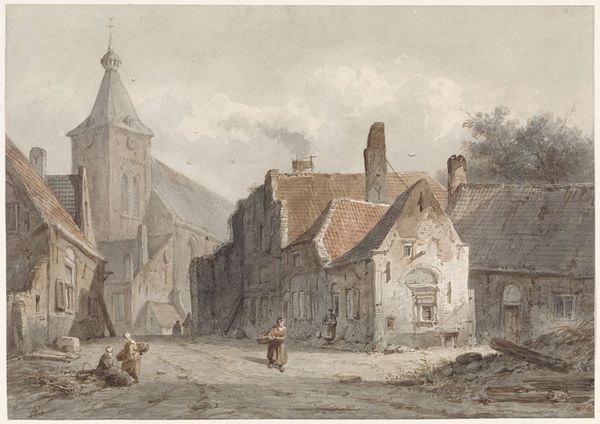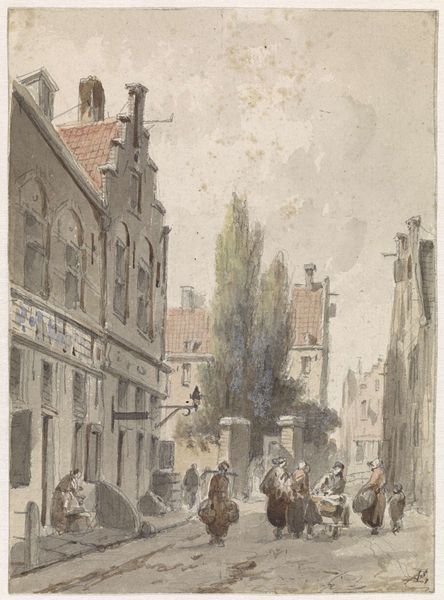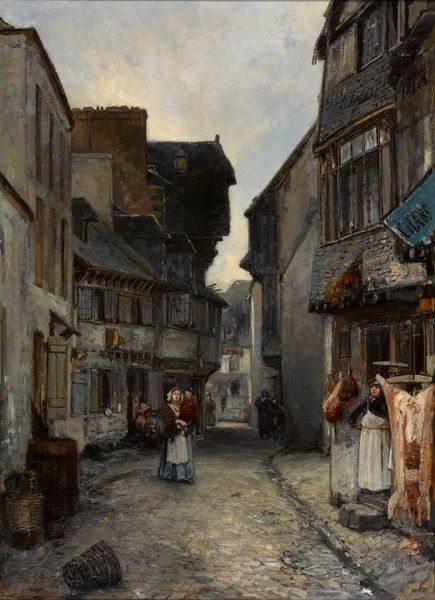
oil-paint
#
dutch-golden-age
#
oil-paint
#
oil painting
#
cityscape
#
genre-painting
#
realism
Dimensions: height 36 cm, width 27.5 cm, depth 6 cm
Copyright: Rijks Museum: Open Domain
Editor: This is Jacob Vrel's "View of a Town," painted between 1654 and 1662 using oil paint. The muted color palette makes it feel quite solemn and still, doesn't it? What stands out to you from a formalist perspective? Curator: The architectural forms define the space. Observe the strong diagonals created by the converging rooftops and the contrasting vertical lines of the windows and doorways. The composition is structured to draw the eye towards the background figures. The impasto on the brickwork gives it a certain tactile quality, doesn't it? Editor: It does, the texture seems quite intentional! What about the positioning of the figures, could that have a deeper meaning? Curator: Perhaps, but let's look closer at the interplay between light and shadow. The placement creates visual rhythm that guides our eye around the canvas. How does the use of chiaroscuro influence your perception of depth and form? Editor: The subtle gradations certainly enhance the sense of realism, emphasizing the three-dimensionality of the buildings and the figures. It creates such depth. Curator: Exactly. The brushstrokes, too, aren't haphazard. There's a distinctness that defines the architectural details while rendering the human subjects with greater subtlety, thereby underscoring their status as denizens of the streetscape rather than individual portraits. Editor: I see how the lack of individualization keeps focus on the spatial qualities. Thank you; it gives a different perspective for thinking about historical painting beyond subject and symbolism. Curator: Indeed, by analyzing formal structures, we can deepen our experience of this work. Focusing on those components offers unique interpretive insight.
Comments
No comments
Be the first to comment and join the conversation on the ultimate creative platform.
